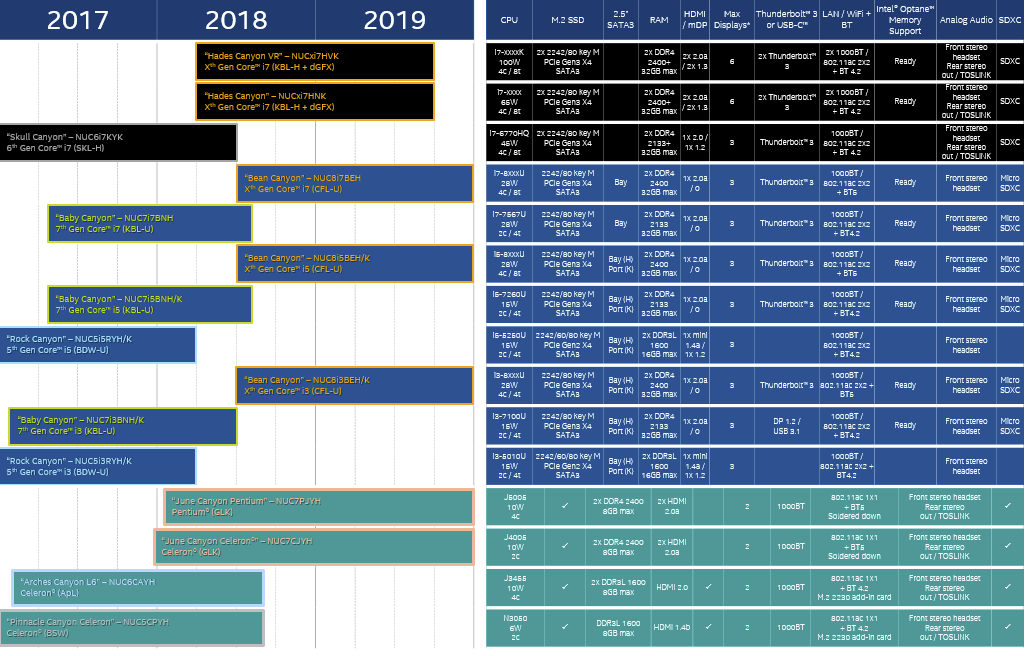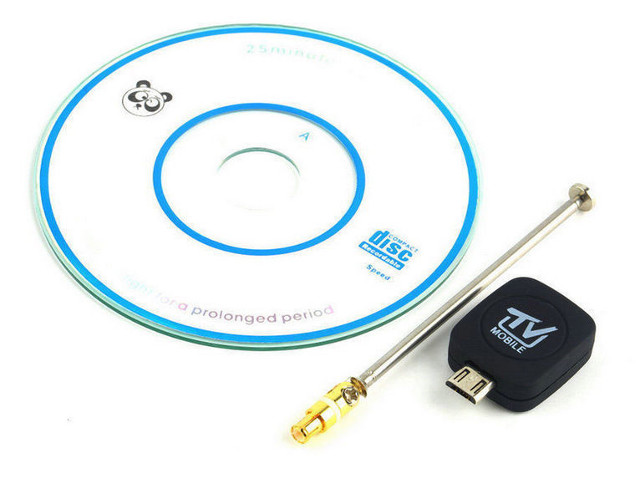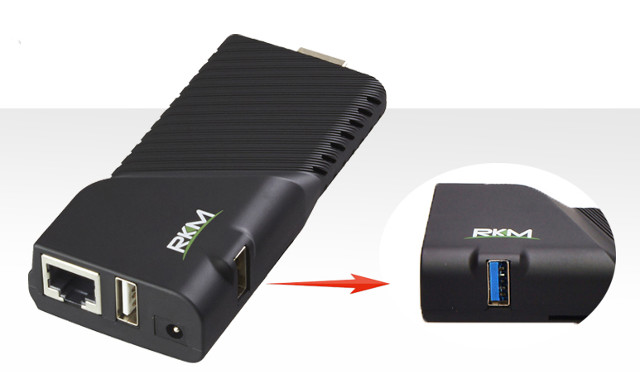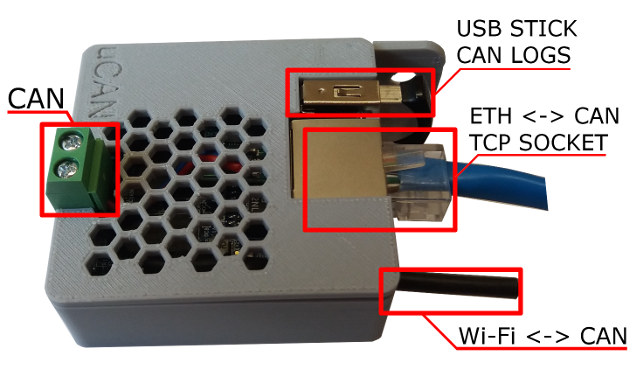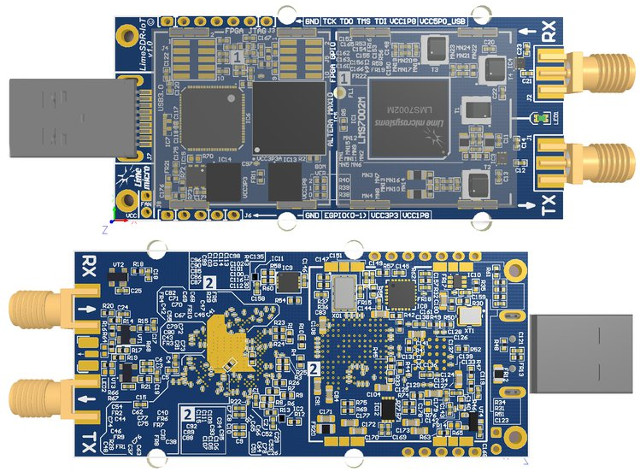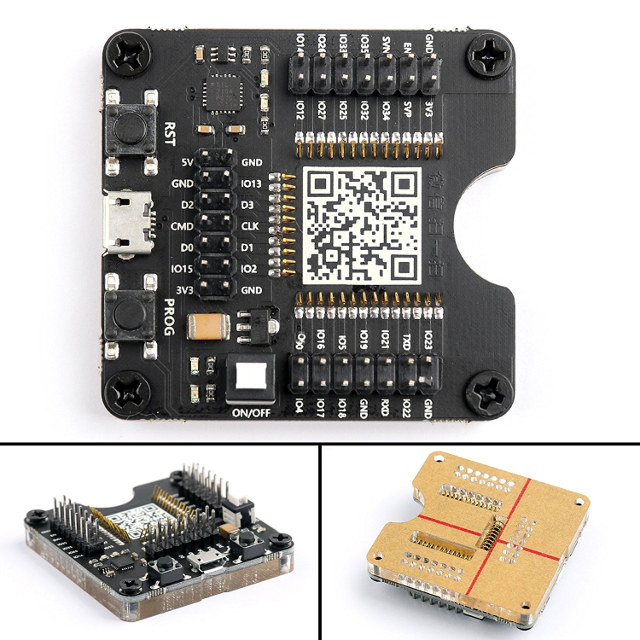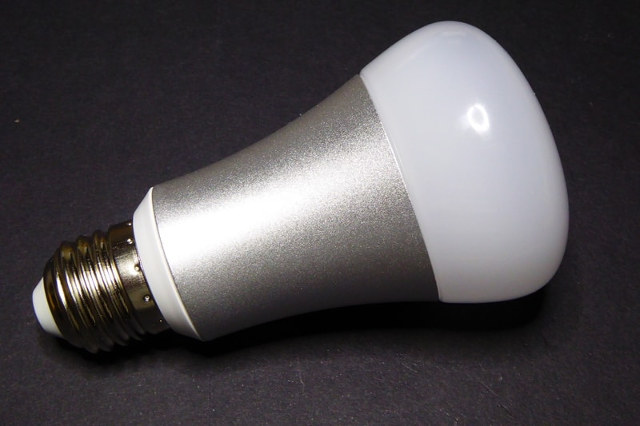Intel’s new generation of Gemini Lake and Coffee Lake processors is expected to launch at the end of this year, beginning of next, and this morning I received Intel’s NUC roadmap that gives a good idea of what’s coming in 2018 and 2019. Intel plans a whole new generation of NUCs from “Hades Canyon VR” NUCxi7HVK model with a 100W Intel Core i7-xxxxK Kaby Lake-H processor to “June Canyon Celeron” NUC7CJYH model with a 10W Intel Celeron J4005 dual core “Gemini Lake” processor. All in all a total of 7 new NUCs should be launching in 2018. Let’s have a closer look at the cheaper and lower power Gemini Lake models, starting with “June Canyon Celeron” NUC7CJYH specifications: SoC – Intel Celeron J4005 dual core GLK processor (10W TDP) System Memory – 2x DDR4-2400 slots for up to 8GB RAM Storage – M.2 SSD slot, SDXC slot Display – 2x […]
TV030 is a $10 DVB-T Tuner for your Android Smartphone or Tablet
We’ve previously covered tuners or small boxes that allow you to watch free-to-air TV on your smartphone or tablet with products such as PT115m/PT115e or DTV Link box, but I’ve just noticed GeekBuying added TV030 DVB-T tuner that connects to the micro USB port of your smartphone, and sells for just $10.99 shipped. TV030 TV mobile stick specifications: Signal: 75 Ohm Digital TV Aerial Input Punctured Codes: 1/2, 2/3, 3/4, 4/5, 5/6 and 7/8 Receive Frequency: DVB-T: 474 ~ 858 MHz (UHF) Input: DVB-T Bandwidth: 6/7/8 MHz Dimensions – 27 x 18 x 7mm; antenna: 210mm long max Weight – 14 grams The stick sells with an antenna, and a CDROM apparently containing the Android apk for EZTV app. It requires Android 4.1-5.0 or greater with the following minimal requirements to watch: SD TV – Cortex A8 @ 800 MHz with 512MB RAM, 20 MB flash, 800×480 display resolution HD […]
Rikomagic Introduces V3 TV Stick, MK39 TV Box, R3 Projector, and DS01 Digital Signage Player
Rikomagic will launch four new Android devices this month with RKM V3 TV stick powered by Rockchip RK3328 processor, RKM MK39 TV box / mini PC based on Rockchip RK3399, RKM R3 projector with an octa-core processor, and DS01 digital signage player. RKM V3 TV Stick RKM V3 specifications: SoC – Rockchip RK3328 quad core Cortex A53 processor @ 1.5 GHz with Mali-450MP2 GPU System Memory – 2 GB RAM Storage – 8 GB eMMC flash + micro SD card up to 32GB Video & Audio Output – HDMI 2.0a up to 4K @ 60 Hz with HDR10 and HLG support Video Codec – 4K VP9, H.265 and H.264. 1080p VC-1, MPEG-1/2/4, VP6/8 Connectivity – 10/100M Ethernet, 802.11 b/g/n WiFi, Bluetooth 4.2 USB – 1x USB 2.0 port, 1x USB 3.0 port Misc – IR receiver? (TBC) Power Supply – 5V/2A via power barrel jack The stick runs Android 7.1 […]
uCAN CAN Ethernet Converter and Logger is Based on Orange Pi Zero Board
The CAN bus is a serial communication protocol used in automotive and automation applications. The guys at ucandevices.pl have designed a solution around Orange Pi Zero board that allows you to log CAN bus data or act as a bridge between the CAN bus and Ethernet or WiFi. They call it “CAN Ethernet converter, CAN Logger, Linux CAN computer”. Sorry, no shorter name that I could find… uCAN (pronounced micro CAN) CAN Bus board specifications: Main Board – Orange Pi Zero with Allwinner H2+ quad core cortex-A7 processor, 256 MB RAM Network Connectivity – 10/100M Ethernet, 802.11 b/g/n WiFi Can Bus – 2-pin terminal block; support for CAN version 2.0 support Power Supply – DC 5V/2A via micro USB port Dimension – 50 x 50 x 20 mm The device comes pre-load with Debian distribution provided by Armbian plus various CAN tools. The getting started video below shows uCANTools web […]
Mictrack MT600 4G GPS Tracker Supports Traccar, OpenGTS, and Other GPS Tracking Platforms
Cellular GPS trackers have been around for a few years, but so far mostly 2G or 3G GPS trackers with products like Ping, Particle Asset tracker, and many other models selling on Aliexpress. 4G GPS tracker have been less common. However, recently we’ve seen platforms like Wio LTE and AutoPi that could handle GPS tracking over LTE connectivity, and another alternative would be Mictrack MT600 that ready-to-use solution to track your car or other vehicle with GPS and 4G. Mictrack MT600 hardware specifications: GNSS U-BLOX7 GPS Chip GPS sensitivity -162dBm Channel – 56 Positioning Accuracy – 10m Cold start: 30s; warm start: 15s; hot start: 1s SMA antenna connector Cellular Connectivity Qualcomm 4G LTE chip MT600-A model (North America): 4G FDD LTE: 700/850/1700/1900MHz 3G UMTS: 850/1700/1900MHz GSM: 850/1900MHz MT600-C model (Asia): 4G FDD LTE: 900/1800/2100MHz 4G TDD LTE: 1900/2300/2500/2600MHz 3G UMTS: 900/2100MHz GSM: 900/1800MHz MT600-E (Australia/Asia/Europe) 4G FDD LTE: 800/850/900/1800/2100/2600MHz 3G […]
LimeSDR Mini is a $135 Open Source Hardware, Full Duplex USB SDR Board (Crowdfunding)
LimeSDR open source hardware software defined radio was launched last year with the promise of integration with Ubuntu Snap Store allowing to easily download and install various radio implementations such as LTE, WiFi, Bluetooth, LoRa, etc… It was offered for $200 and up as part of a crowdfunding campaign, but Lime Microsystems is back on CrowdSupply with a cheaper and low end version aptly called LimeSDR Mini.LimeSDR mini specifications: FPGA – Intel Altera Max 10 (10M16SAU169C8G) with 16K Logic gates, 549 KB M9K memory, 2,368 KB user flash memory Storage – 4 MB flash memory for data; 2x128KB EEPROM for RF transceiver MCU firmware and data RF Lime Microsystems LMS7002M RF transceiver Tx & Rx SMA connectors Frequency range – 10 MHz to 3.5 GHz RF bandwidth – 30.72 Mhz Sample Rate – 30.72 MSps with 12-bit sample depth Power Output (CW): up to 10 dBm USB – 1x USB […]
Need to Program Many ESP-WROOM-32 / ESP-32S Modules? This Board Should Help
We’ve just published an article about a 3D printed jig to program some ESP8266 light bulbs, but as I watched Andreas Spiess’s latest video about ESP32 boards, he showed a board specifically designed to flash firmware to ESP-WROOM-32 or/and ESP-32S modules, which could be useful if you have many to program. The acrylic base does not appear to be offered by all vendors, as some use some standoffs instead to lift the board up. You just need to insert your compatible ESP32 module in the board, flash the firmware it, take it out, and more to the next module. It can also be used as a development board since it exposes I/Os via three 14-pin headers, comes with a on/off button, reset and program buttons, as well as a micro USB port for power, programming and debugging I first found it on Banggood, where it is sold for $14.99 shipped, […]
Designing a 3D Printed Jig to Flash Firmware to ESP8266 based Light Bulbs
Karl here. I have to say that my favorite part of 3D printing is designing things from scratch. Recently a reader was asking about a way to flash a lot of Ai Lights on a project he was working on. I suggested 3D printing a jig that pressure fits pins. He didn’t have a printer, and we exchanged contact information and he sent me one of the lights and some pogo pins from Amazon. Design in Fusion 360 I started by taking a picture of the light to get my pin placement. I set a scale by measuring a known distance then printed and tested. It took about 3 iterations to get them to line up in real life. Keep in mind camera lenses distort reality and knew It would take a couple times. I would just let a few layers print then stop and line everything up. I had […]


